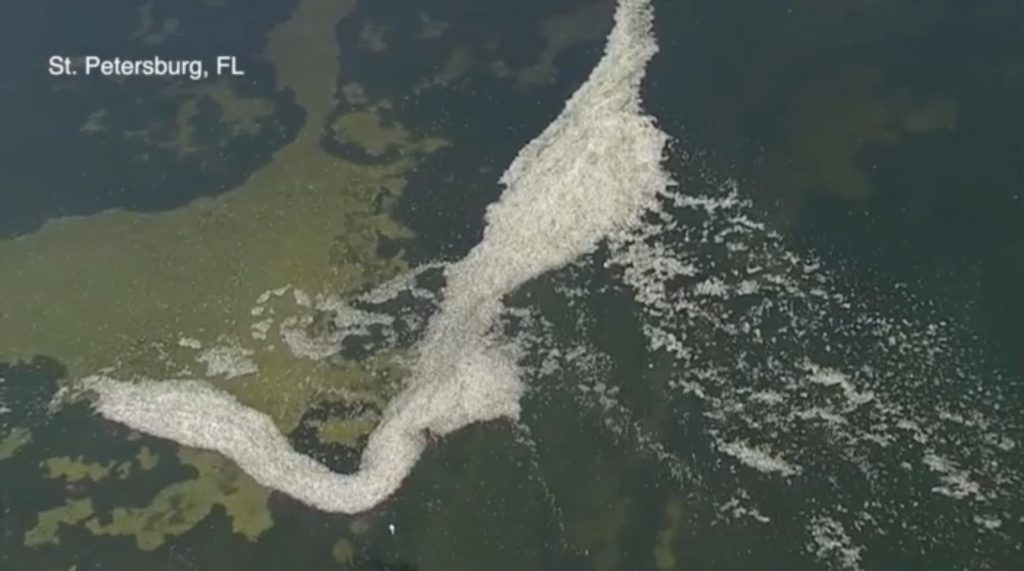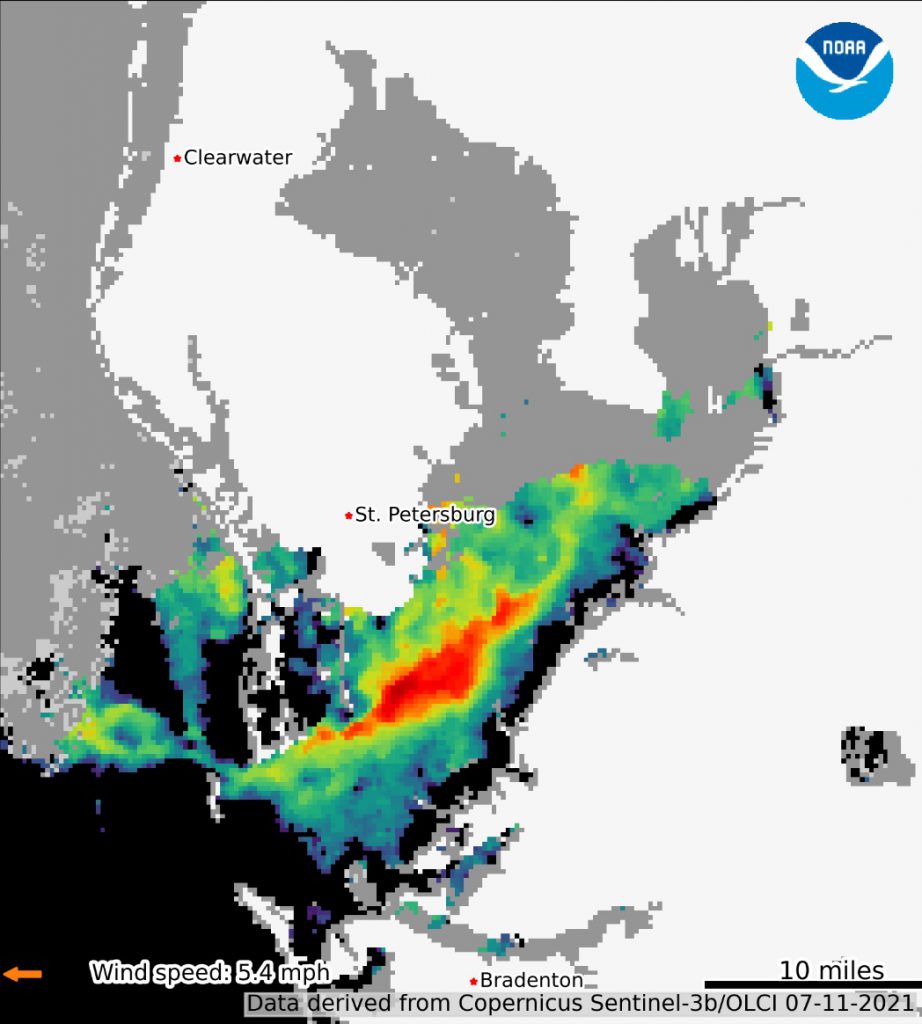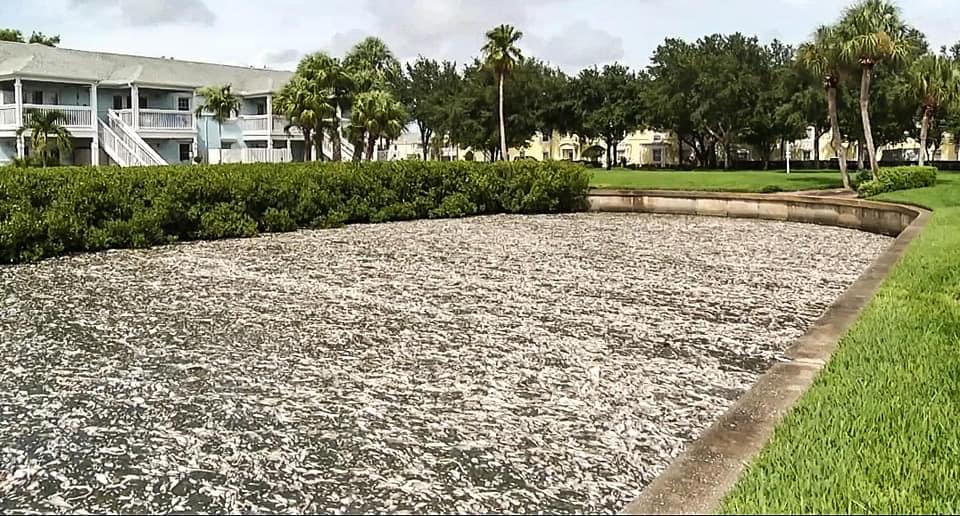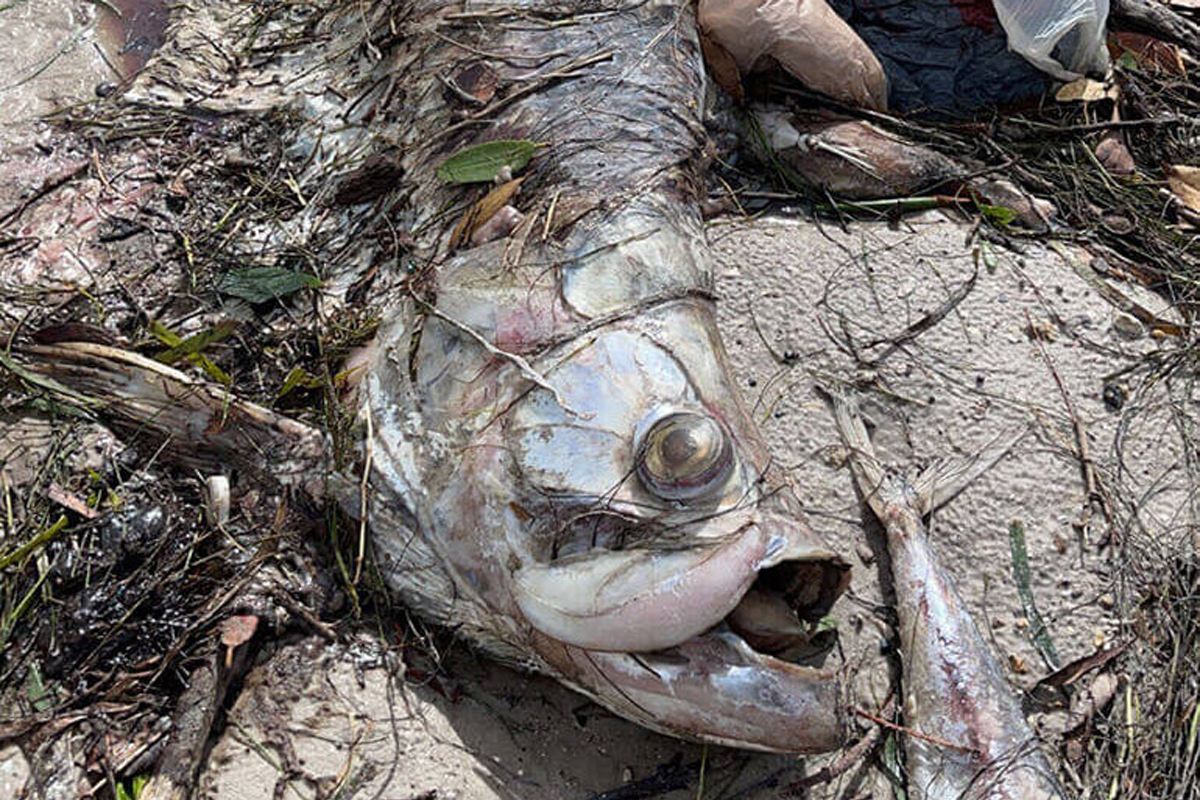In what seems like the new annual normal, the Gulf Coast of Florida is seeing the start of debilitating red tide. Unfortunately, Tampa Bay, an area that normally doesn’t get hit too hard by red tide, has become ground zero of an absolutely devastating fish kill.
In a Facebook Live interview Friday, St. Petersburg emergency manager Amber Boulding reported that 15 tons of dead fish had been cleaned up from the current fish kill, with 9 tons collected in the previous 24 hours alone.
“We’ve been dealing with red tide,” Boulding told Free Range American. “Tropical storm Elsa came in and really exacerbated that issue and pushed more fish in.”
Reports are coming in of thousands of dead mature tarpon, snook, redfish, and forage fish, such as pinfish, carpeting the coast — a loss that has very real effects on future fish numbers.

When this many big fish die, there are simply fewer fish contributing to the spawning effort, and because of the toxicity of harmful algal blooms, or HABs, the rearing habitat for juvenile fish becomes uninhabitable. Plus, the nosedive in forage fish and crustacean numbers depletes the bigger fish’s food sources.
This year is already shaping up to be more devastating than the 2018 red tide event, which was the worst in Florida in more than a decade, killing more than 2,000 tons of fish and marine life, Boulding said.
“We think back to our last red tide bloom in 2018 and how serious it was. Talking to the staff here, this is worse,” Boulding said. “They’re seeing more fish kills coming in. We go up and take aerial footage, we still see more out there in the bay.”
Red tide, which is an overabundance of naturally occurring red algae, is considered to be the cause of the fish kill, with nutrient-overloaded freshwater discharge feeding the algae and tropical storm Elsa creating unfavorable on-shore weather patterns.

The overabundance of red algae comes from inland water sources supercharged with phosphorous and nitrogen flowing into the ocean. The phosphorous and nitrogen come from large-scale agricultural discharge, golf-course runoff, and municipal sources, such as septic systems and lawn fertilizer.
In Tampa Bay specifically, the recent release of 215 million gallons of nitrogen-loaded wastewater from Piney Point fertilizer plant is overwhelmingly understood to be the source of the current HAB.
The excessive amounts of nutrients in the water feed the naturally occurring algae that arrive during the season, causing HABs and turning the water red along the coast.

In Tampa Bay, the red algae that Elsa was moving north were essentially being blown into an eat-until-you-puke buffet of nutrients provided by the Piney Point release.
The resulting HAB released toxins that are deadly to fish and harmful to animals and humans. HABs also lower oxygen levels in the water to the point where fish actually suffocate and die if they don’t move out of the area quickly enough.
Unfortunately, as the summer progresses, HABs will likely be found along almost all of the Florida coast, so there really is no escaping their effects.
There are no current restrictions on recreational fishing for coastal species, but as we warned before, giving the fish a break might be a good idea.
Read Next: California Drought Amplifies Threat to Endangered Salmon and Steelhead








Comments